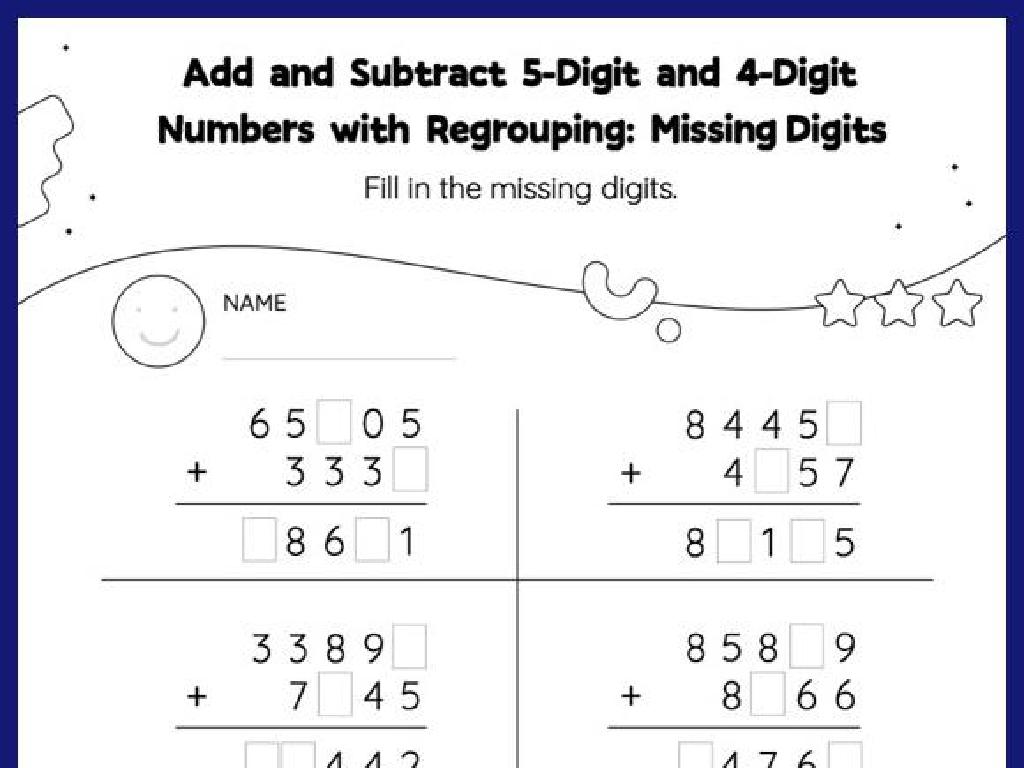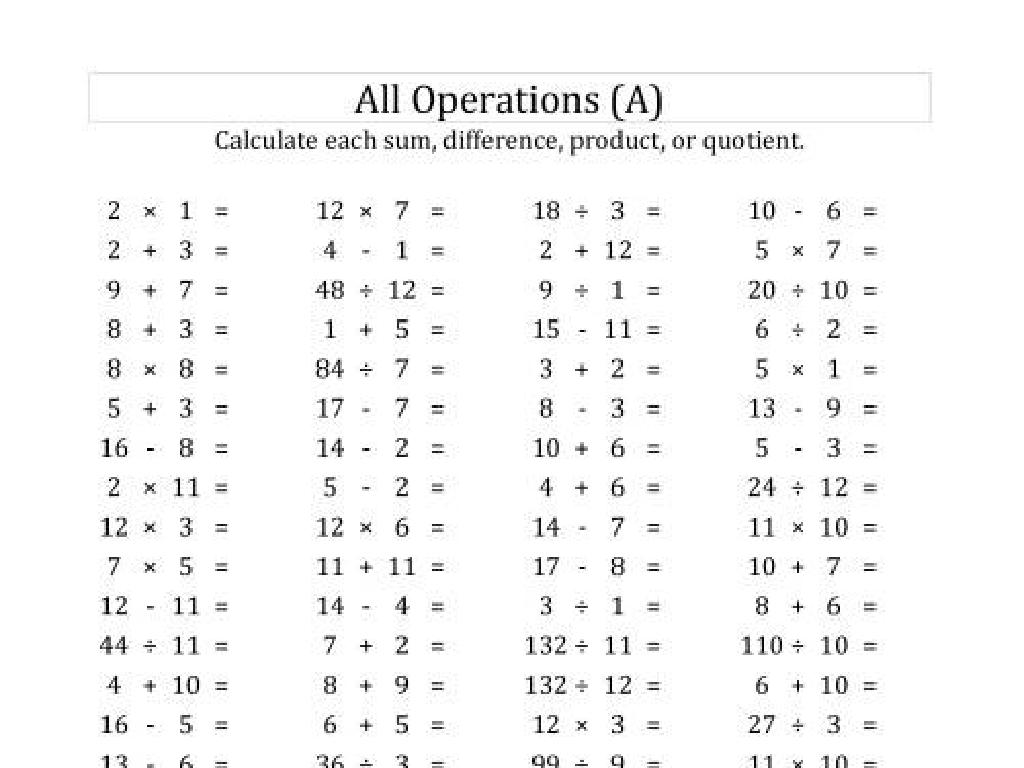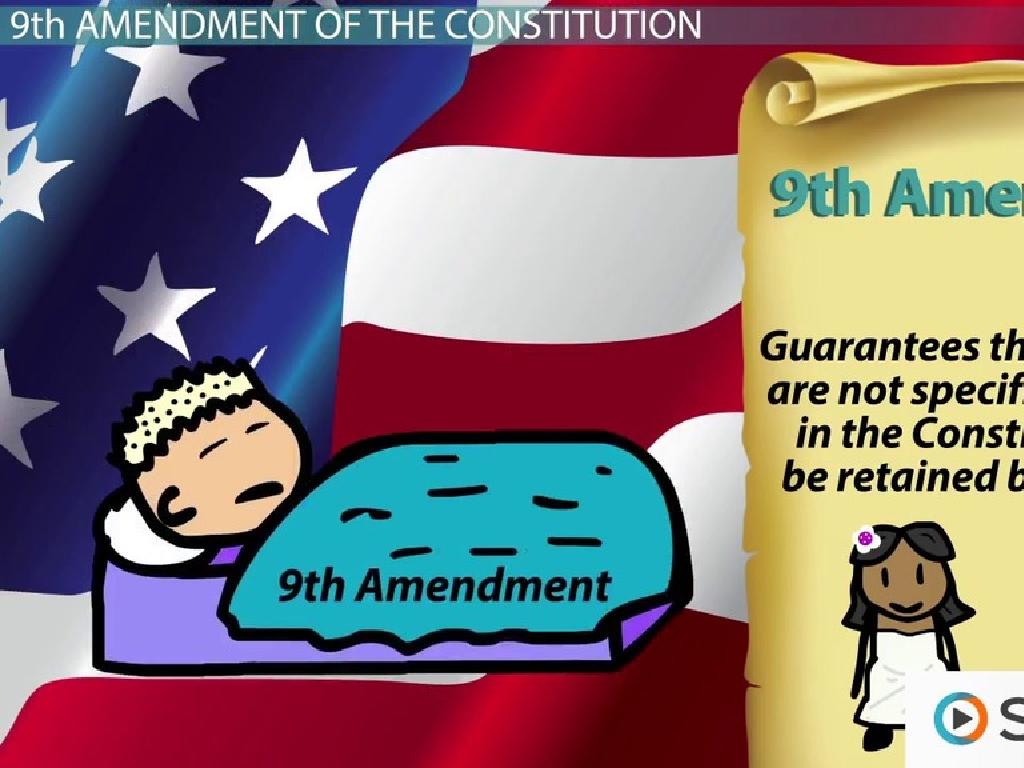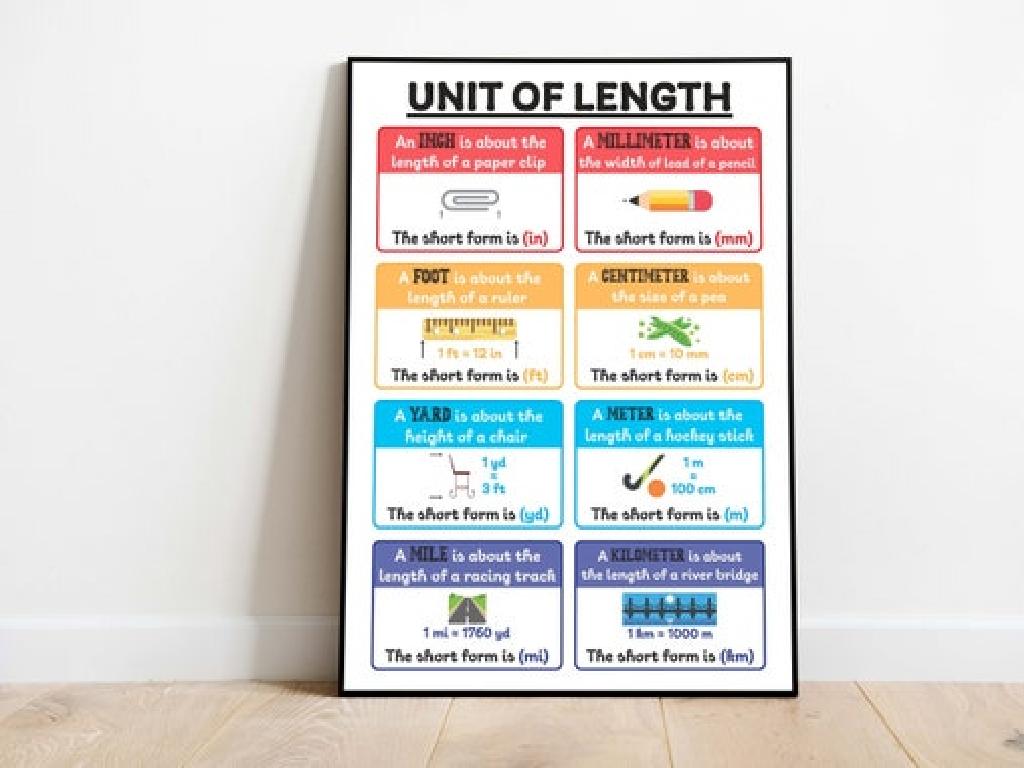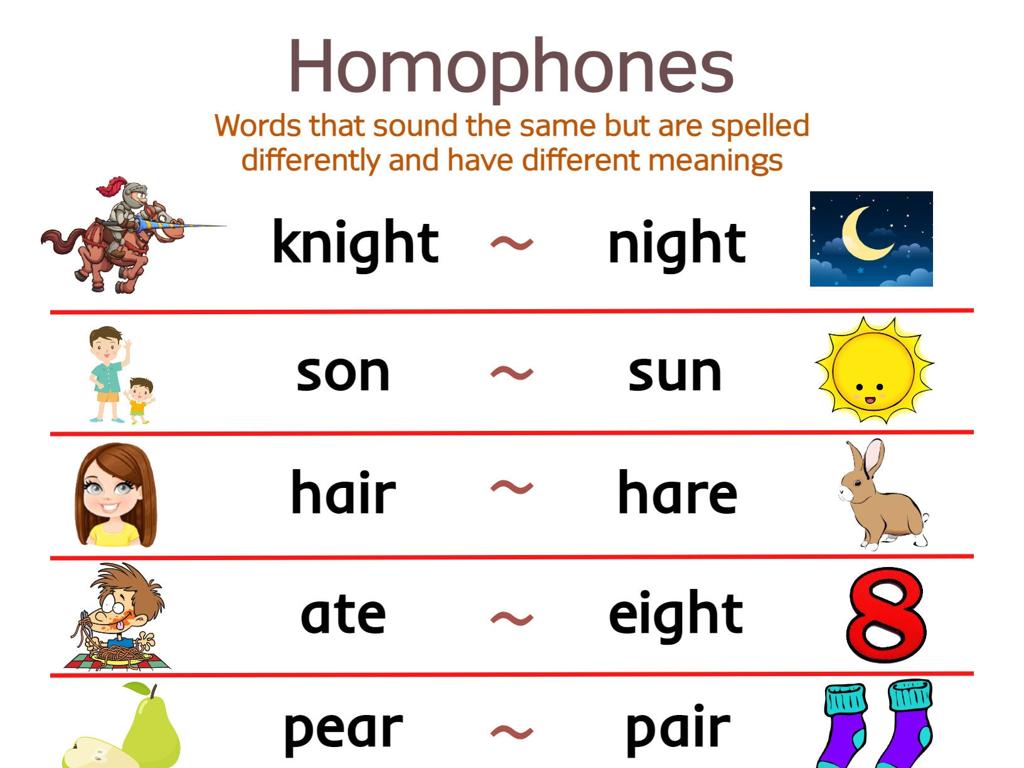Complete The Word With The Right Short Vowel
Subject: Language arts
Grade: First grade
Topic: Short Vowels
Please LOG IN to download the presentation. Access is available to registered users only.
View More Content
Welcome to Short Vowels!
– Learning about short vowels
– Vowels: special alphabet letters
– Vowels can make different sounds
– Five vowels: A, E, I, O, U
– Each vowel has a short sound
– Short vowels in words
– We’ll practice finding and writing them
|
This slide introduces first graders to the concept of short vowels, which are fundamental to reading and writing in English. Start by explaining that vowels are unique letters that make special sounds. There are five vowels to remember: A, E, I, O, and U. Each of these vowels has a ‘short’ sound, which is the sound the vowel makes in words like ‘cat’, ‘bed’, ‘fish’, ‘pot’, and ‘sun’. Encourage the students to repeat the vowels and their short sounds after you. Use visual aids like flashcards to help them associate the letters with the sounds. The goal is for students to be able to recognize and use these short vowel sounds when they are reading and writing.
Understanding Short Vowels
– What are short vowels?
– Vowels that are not held for long when we say them
– Each vowel’s short sound
– ‘a’ as in ‘apple’, ‘e’ as in ‘egg’
– Examples: ‘cat’, ‘bed’, ‘fish’
– ‘i’ as in ‘igloo’, ‘o’ as in ‘octopus’
– Practice with ‘pot’, ‘cup’
– ‘u’ as in ‘umbrella’, let’s try some words!
|
This slide introduces first graders to the concept of short vowels, which are the sounds that vowels make in certain words. It’s important to emphasize that these sounds are brief and not drawn out. Provide clear examples for each vowel sound and encourage students to repeat after you. Use common words that they are likely to know, which will help them connect the sounds to the letters. During the practice portion, have students try to identify the short vowel sounds in different words and use visual aids like pictures of the items mentioned (cat, bed, fish, pot, cup) to reinforce learning. This will prepare them for reading and writing activities involving short vowels.
Learning the Short Vowel ‘A’
– ‘A’ sounds like ‘a’ in ‘apple’
– Practice saying: ‘A-a-apple’
– Find words with the ‘A’ sound
– Words like ‘cat’, ‘bat’, ‘map’
– Class activity: Word examples
– We’ll write words on the board together
|
This slide introduces the short vowel ‘A’ and its pronunciation, similar to the ‘a’ in ‘apple’. Start by having the students repeat the sound with you to ensure they can mimic the sound accurately. Then, move on to identifying words that contain the short ‘A’ sound, using familiar examples to solidify their understanding. For the class activity, encourage students to come up to the board to write down words they know with the short ‘A’ sound, fostering participation and reinforcing the lesson through practice.
Learning the Short Vowel ‘E’
– The ‘E’ sounds like ‘e’ in ‘elephant’
– Practice making the ‘E-e-elephant’ sound
– Words with the short ‘E’ sound
– Find words in your favorite books with the ‘E’ sound
– Examples: ‘bed’, ‘red’, ‘ten’, ‘net’
– Practice spelling and saying these words
|
This slide introduces the short vowel ‘E’ and its pronunciation, similar to the first ‘e’ in ‘elephant’. Start the class by practicing the sound together to ensure all students can mimic it correctly. Then, present examples of simple words that contain the short ‘E’ sound. Encourage the students to repeat the words after you, focusing on the vowel sound. For homework, ask the students to look for words with the short ‘E’ sound in their favorite books, write them down, and practice spelling and pronouncing them. This will help reinforce their understanding of the sound and its use in different words.
Learning the Short Vowel ‘I’
– The sound of short ‘I’
– It sounds like ‘i’ in ‘igloo’
– Say it loud: ‘I-i-igloo’
– Words with the ‘I’ sound
– Examples: ‘sit’, ‘lip’, ‘win’, ‘kit’
– Practice makes perfect
– We’ll practice with fun activities
|
This slide introduces the short vowel ‘I’ and its pronunciation, similar to the ‘i’ in ‘igloo’. Start by having the students repeat the sound ‘I-i-igloo’ to familiarize them with the short ‘I’ sound. Then, present words that contain this sound to help them recognize and pronounce it in different contexts. Encourage the students to say the words out loud and practice with engaging activities such as matching games or filling in missing vowels in words. The goal is to help students become comfortable with identifying and using the short vowel ‘I’ sound in their reading and writing.
Short Vowel ‘O’ Sound
– ‘O’ as in ‘octopus’
– Practice saying: ‘O-o-octopus’
– Find words with the short ‘O’
– Look for words in books or around you that have the ‘O’ sound.
– Listen for the ‘O’ sound
– Words like ‘pot’, ‘top’, and ‘dog’ have the short ‘O’ sound.
|
This slide introduces the short vowel ‘O’ and its sound as in ‘octopus’. Start by having the students repeat the sound with you to ensure they can recognize and pronounce it correctly. Then, engage the students in a fun activity where they look for words with the short ‘O’ sound in their favorite books or classroom materials. Encourage them to listen carefully to words during the day to identify the short ‘O’ sound. This will help them understand how the sound is used in different words and contexts. Make sure to praise their efforts and correct gently if they misidentify sounds.
Learning Short Vowel ‘U’
– ‘U’ sounds like ‘u’ in ‘umbrella’
– Say it together: ‘U-u-umbrella’
– Examples: ‘cup’, ‘sun’, ‘pup’, ‘mud’
– ‘Cup’ like what we drink from, ‘sun’ in the sky, ‘pup’ a baby dog, ‘mud’ on the ground
– Practice finding short ‘U’ words
– Look in books or around you for words with the ‘u’ sound
|
This slide introduces the short vowel ‘U’ and its sound, which is similar to the first sound in ‘umbrella’. Start by pronouncing the sound together with the class to ensure they can mimic it correctly. Provide clear examples of short ‘U’ words, and encourage the students to visualize each word with the help of common objects or experiences. For instance, they can think of drinking from a cup or playing with a puppy. Finally, engage the students in an activity where they look for words with the short ‘U’ sound in their favorite books or in the classroom environment, reinforcing their understanding through practical application.
Complete the Word with Short Vowels!
– Find the right short vowel
– Complete words with vowels
– Fill in the blank: h_t (hot, hit, hut)
– Recall the vowel sounds
– A, E, I, O, U each have a unique sound
– Practice makes perfect
– The more we practice, the better we get!
|
This slide is an interactive activity for students to apply their knowledge of short vowel sounds. Encourage the students to think about the sounds of A, E, I, O, and U as they try to complete words with the correct vowel. Provide examples on the board and work through them together, then allow the students to try on their own. Make sure to remind them of the vowel sounds we’ve learned in class. As they work, walk around the room to offer help and positive reinforcement. For homework, ask them to find words in their favorite books and identify the short vowel sounds.
Class Activity: Vowel Hunt
– Play ‘Vowel Hunt’ game
– Find objects with short vowels
– Look for items like ‘hat’, ‘pen’, ‘jug’, ‘net’, ‘lip’
– Write words and draw objects
– Share your findings with the class
|
This interactive activity is designed to help first graders recognize and understand short vowel sounds in a fun and engaging way. The teacher will explain what short vowels are and demonstrate the sounds they make. Students will then be encouraged to look around the classroom for objects that contain these short vowel sounds in their names. Once they find an object, they should write down the word and draw a picture of it. This will help them associate the sound with the letter and the object. After the hunt, students will have the opportunity to share their findings with the class, reinforcing their learning and allowing for peer learning. Possible variations of the activity could include working in pairs, setting a time limit, or categorizing the objects found by vowel sound.
Review and Goodbye!
– Excellent work on vowels!
– Let’s review short vowel sounds.
– Short vowels: a, e, i, o, u as in ‘cat’, ‘bed’, ‘fish’, ‘pot’, ‘sun’.
– Pat on the back, you’ve learned!
– Keep practicing your vowels!
– Try to read more words with short vowels at home.
|
This slide is meant to conclude the lesson on short vowels. Start by praising the students for their hard work during the lesson. Then, do a quick recap of the short vowel sounds, perhaps by having the students recite or write them down. Encourage the students by acknowledging their effort and the new knowledge they’ve gained. Finally, remind them to keep practicing at home by reading books and identifying the short vowel sounds in different words. This will help reinforce what they’ve learned in class and improve their reading skills.

